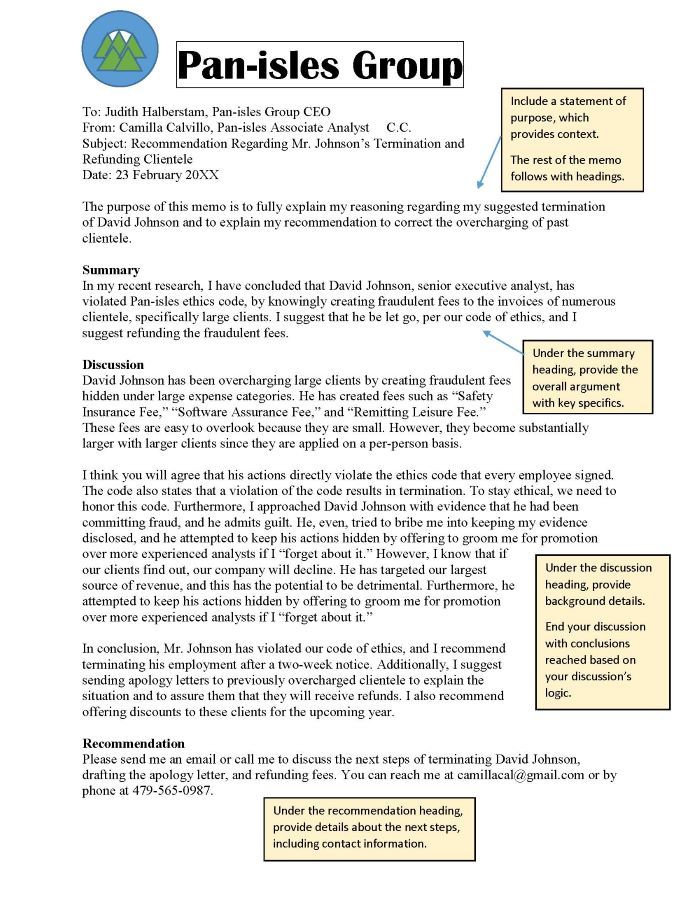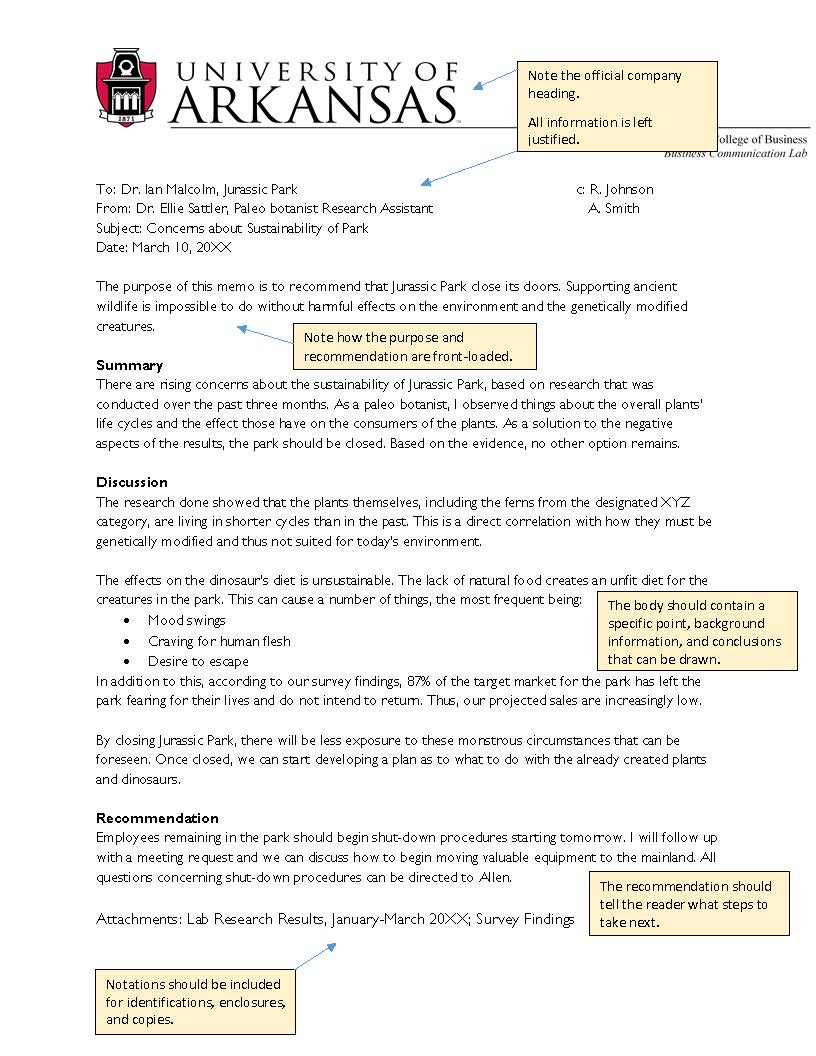Persuasive Writing in Business

In this way, professors are asking students to write persuasively rather than just informatively. In a persuasive writing assignment, you are arguing for or recommending a specific business strategy. Persuasive writing, then, involves proposing a step, plan, or decision that is supported with evidence and logic.
Examples of persuasive writing in business include the following:
- Case analysis
- Industry analysis
- Claim letter
- Adjustment letter
- Business brief
- Memo
Below, two examples of persuasive writing in business are annotated, detailing how the writers of these documents move from informative writing to persuasive writing by giving a recommendation and by supporting their argument.
What is a memo?
Memos are a formal genre of internal correspondence. They have a consistent format: purpose
statement, summary, discussion, and recommendation. The purpose of a memo is to provide the reader with a conclusion and recommendation for the next step of
a process or plan.
See the model below for more details:

How do you write a claim letter?
Write a claim letter when you have a polite, reasonable complaint about an unsatisfactory experience, product,
or service. In a claim letter, you recommend possible solutions to the situation. As with a memo, claim letters
are a type of formal communication. However, the claim letter is a more personal type
of communication.
See the model below for more details:

This resource was prepared by the Business Communication Lab at the Sam M. Walton College of Business